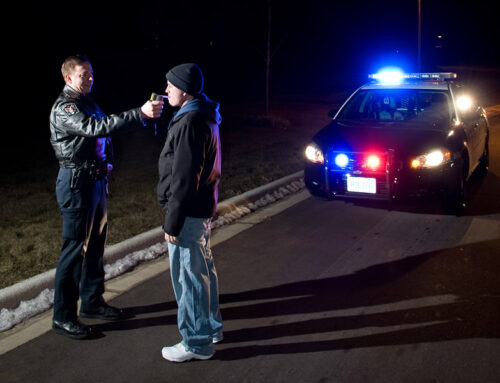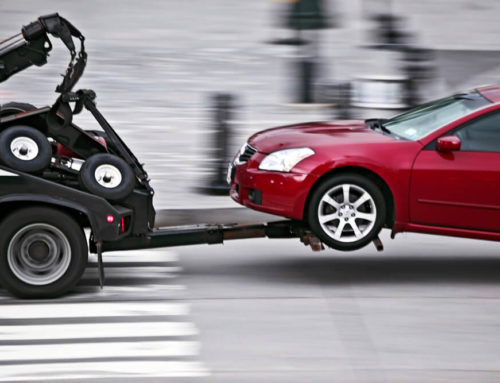In State v. Tanksley decided February 8, 2012, the Minnesota Supreme Court rejected defendant Tanksley’s challenge to the reliability of DWI urine testing. The court held that it was proper for the trial court to reject Tanksley’s request for a Frye-Mack hearing because Tanksley’s proffered basis for the hearing was not relevant to the charged DWI offense.
Tanksley was charged with misdemeanor Fourth Degree DWI based upon a urine test with a reported alcohol concentration of 0.13. Before trial, Tanksley requested a Frye-Mack evidentiary hearing, challenging the reliability of first-void urine testing and seeking to establish that first-void urine testing does not correlate reliably with a driver’s blood alcohol concentration. In support of his request, Tanksley argued that first-void urine testing is flawed scientifically because such samples contain urine that has “pooled” in an individual’s bladder over time and alcohol concentration levels obtained from first-void urine tests may not correlate with an individual’s blood alcohol concentration at the time of testing.
The trial judge denied the request for the Frye-Mack hearing, ruling that urine testing was not a novel scientific technique, and therefore, the first requirement for a Frye-Mack challenge was not met. Further, the trial judge ruled that the correlation between one’s first-void urine alcohol concentration and actual blood alcohol concentration is irrelevant to the charge of driving with an alcohol concentration of 0.08 or more. The court reasoned that the State need only prove that Tanksley’s alcohol concentration at the time of, or within 2 hours of, driving was “0.08 or more” under any of the three approved methods for testing alcohol concentration (blood, breath, or urine). Thus, the State was not required to prove additionally that Tanksley’s urine alcohol concentration correlated with his blood alcohol concentration.
Tanksley first appealed the trial court’s decision to the Minnesota Court of Appeals. Relying on its prior decision in State v. Tanksley, the court of appeals concluded the district court abused its discretion in denying Tanksley a Frye-Mack hearing. The court of appeals held, however, that any error by the district court was harmless. Therefore, Tanksley could show no prejudice from having been denied a Frye-Mack hearing.
Tanksley then appealed the case to the Minnesota Supreme Court, which granted review on the issue of whether it was reversible error for the district court to deny a Frye-Mack hearing. In affirming the trial court judge’s ruling, the supreme court held that Tanksley was not entitled to a Frye-Mack hearing because the correlation between first-void urine alcohol concentration and blood alcohol concentration is not relevant to the charged crime. The supreme court reasoned that the State is not required at trial to prove a correlation between one’s urine alcohol concentration and actual blood alcohol concentration to obtain a conviction for driving with an alcohol concentration of 0.08 or more. According to the supreme court, the legislature has said that the State can prove the 0.08 alcohol concentration by way of blood, urine, or breath, and the State need not demonstrate any correlation to one’s actual blood alcohol concentration.
The Tanksley decision is troubling for DWI lawyers. By focusing only on relevance, the supreme court side-stepped application of the two prongs of any Frye-Mack challenge. First, the court did not decide whether urine testing is a novel scientific technique. That question persists. Second, the court did not decide whether urine testing has a scientifically reliable foundation. The heart of the issue is whether a defendant is entitled to a Frye-Mack hearing regarding the scientific reliability of urine testing in DWI cases. The overwhelming majority view among scientists is that urine testing should not be used in DWI cases, especially first-void sampling. The court, however, was unwilling to reach that issue.
Future requests for a Frye-Mack will need to be supported by more facts than the correlation problem between urine and blood alcohol concentrations. Defense attorneys will need to set forth more evidence regarding the lack of foundational reliability for first-void urine testing.
It is unsettling that the court is unwilling to grant a Frye-Mack hearing concerning a scientifically discredited test that is used widely by Minnesota police agencies to convict people of serious offenses and send them to jail and prison. If this were a challenge to one of three available DNA tests in a murder case, I bet the court would allow a Frye-Mack hearing, especially if that DNA test was universally discredited by the scientific community. Should people charged with DWI have less opportunity to challenge scientific evidence simply because years ago the legislature approved it?
Here is additional information regarding the specious science upon which Minnesota’s urine testing program is based:
1. We know that alcohol in one’s blood is what affects the brain and nervous system, which leads to actual impairment of cognitive and motor skills. Testing for alcohol in one’s urine simply is a more convenient means of approximating one’s blood alcohol concentration, albeit much less reliably. By itself, the presence of alcohol in one’s urine does not affect the brain or nervous system or lead to impairment. However, scientists generally agree that there is an imprecise correlation between the amount of alcohol in one’s blood and alcohol in one’s urine. Stated otherwise, if alcohol is present in one’s urine, alcohol most likely was present in one’s blood contemporaneously or previously. The trouble with first-void urine sampling is that we don’t know whether the alcohol in one’s urine is indicative of a similar blood alcohol concentration minutes ago or hours ago. Due to this problem and others, scientists generally agree that urine testing does not provide a reliable correlation to one’s actual blood alcohol concentration and therefore, should not be used to support allegations of DWI impairment.
2. The two leading forensic science organizations in the world, i.e., the American Academy of Forensic Sciences and the Society of Forensic Toxicologists, agree that urine testing should not be used to prove DWI impairment due to its unreliability. These positions were adopted as late as 2006. The main rationale for these positions is that the presence of alcohol in one’s urine does not correlate well to the level of alcohol in one’s blood for a specific period of time.
3. Minnesota is one of approximately three states in the U.S. to use first-void urine sampling regularly in DWI cases. A handful of other states are authorized to use first-void urine sampling but in practice almost never use urine testing except in rare circumstances. Instead, these states rely on breath and blood tests in nearly all cases. In addition, a handful of states use second-void urine testing, but even that testing is relatively rare because police rely predominantly on breath and blood tests. Minnesota, by contrast, has used urine testing in a significant percentage of cases over the last few years — especially since 2009, when many police agencies stopped using the Intoxilyzer breath test due to the pending court challenge to the machine. Since 2009, the police agencies that no longer use the Intoxilyzer test have been left with two options in DWI cases: blood or urine testing. The police prefer the convenience of urine testing over blood testing, which requires a visit to a hospital. Therefore, the police often ask a driver to submit to a urine test in lieu of a blood test. Everyone agrees that blood testing is the most accurate form of testing for DWI enforcement. However, it happens to be the most costly and time consuming form of testing.
4. In the 1960s and 70s, police agencies in Minnesota used urine testing regularly for DWI enforcement. With the advent of more reliable and convenient breath testing devices, police agencies moved away from urine testing, and the scientific community supported that move due to unreliability of urine testing. Today, almost no respected forensic scientist would support the use of urine testing to prove a driver’s impairment by alcohol, especially first-void urine sampling.
5. Unlike a blood sample, urine samples generally lack stability when they are collected and stored for testing at a later date. In a typical DWI case, the Minnesota BCA crime lab does not test the urine sample for two to four weeks following the date of collection. In addition, the urine sample is not refrigerated immediately by many police agencies. The sample may go two or three days (or more) without refrigeration before it is received by the BCA. Upon receipt by the BCA, state employees promptly refrigerate the sample. Interestingly, the urine sample kits used by police contain a preservative called sodium fluoride, but the scientific community disagrees whether the preservative reliably maintains the stability of the sample prior to its testing. Further, the BCA does not test the urine sample for the presence of sodium fluoride. The BCA assumes that sodium fluoride has preserved the sample properly, but there is no verification that sodium fluoride is present in the actual urine sample used to charge a person with DWI.
6. Minnesota does not test for the presence of glucose in the urine sample. Glucose may be present in the urine sample if the subject has diabetes or other blood sugar disorders. Interestingly, glucose is known to ferment into alcohol when present in a urine sample. This is problematic because fermentation can occur between the time of arrest and the time of testing – some two to four weeks later. If fermentation has occurred, the reported alcohol concentration will artificially high. Private labs like Medtox always test a urine sample for glucose, and if glucose is present, the scientist will reject the validity of the reported alcohol concentration, and seek another urine or blood sample from the subject.
7. Retesting of urine samples maintained by the Minnesota BCA has shown that alcohol concentrations have been significantly higher or lower upon retest by an independent lab using the same technology as the BCA. This can be due to urine’s instability by way of fermentation or evaporation. Conversely, blood test samples have been shown to be quite stable over time, usually within a 3% margin of error.
8. Minnesota statutes and regulations provide no guidelines for the proper administration of a urine test. The urine testing kit provided by the BCA contains instructions for the police officer administering the test, but these instructions are not mandated by Minnesota law. An officer’s failure to follow one or more of the recommended instructions does not render the urine test inadmissible in court because there are no standards codified by law.
Given these concerns, one must wonder why Minnesota police agencies would ever use urine testing in lieu of blood or breath testing in DWI cases. Convenience and money must be the answers, but what about due process, equal protection, and the fair administration of justice?




Leave A Comment